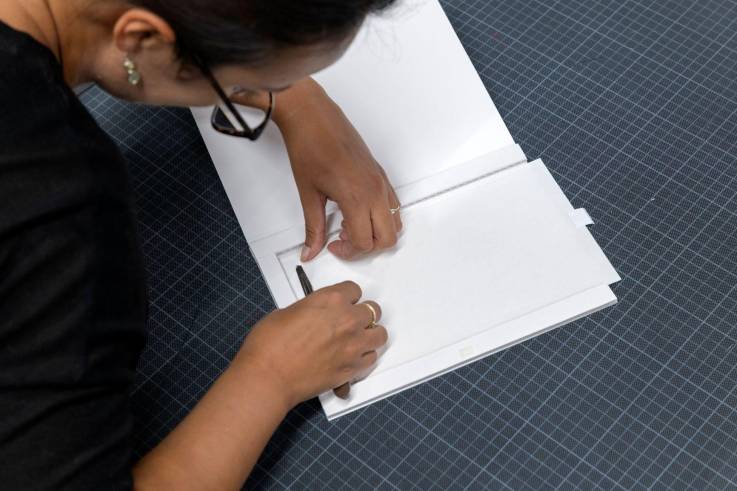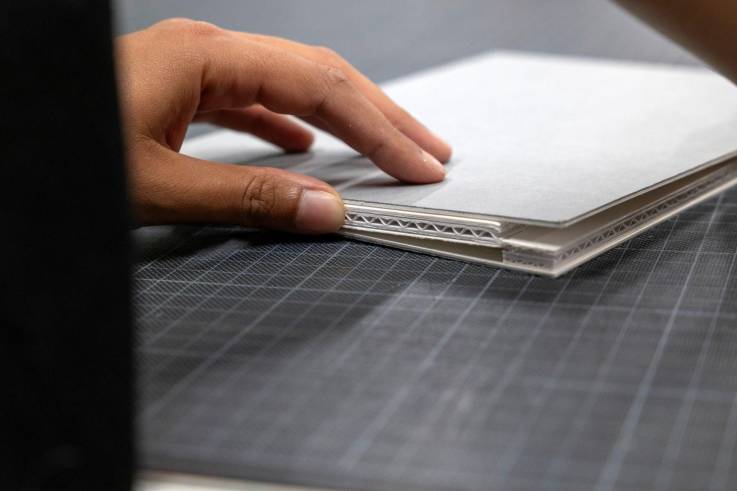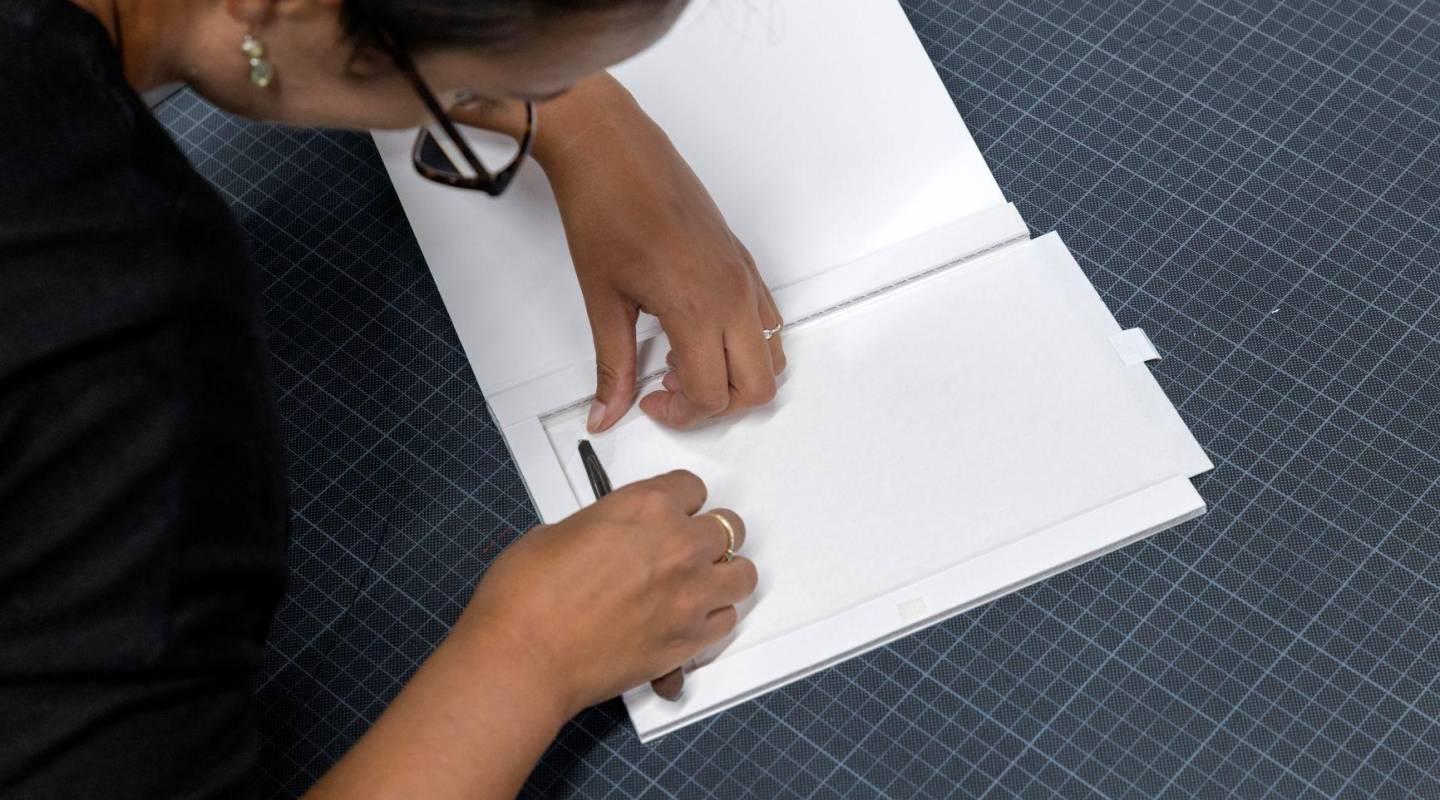In an effort to improve our storage methods for artworks on paper in our depot, the restoration and collection management department have joined forces to develop solutions which take into account preventive conservation procedures all whilst minimising our ecological impact.
It is not always a case of one size fits all. To improve how our paper works are stored and preserved, an earlier project was carried out a few of years ago that involved reconditioning around 20,300 art works. This included dusting and storing them in polyethylene sheets called Mylar. The downside: pigments without adequate binders such as pastels or charcoal drawings, being a friable medium, run the risk of being damaged by static electricity created in the plastic sleeves, leading to pigment transfer.

The box marks the spot
Facing the same problems we had a few years ago, we wanted to create affordable enclosures which are efficient, easy to make and don’t take up any added space in our drawer units. The solution we came up with was a standard-size enclosure, which could fit all paper formats, using materials we already had and left-over cuttings, which could be mass produced, easily made and wouldn’t take up too much room in our drawers. An added advantage is that this new storage system makes it easier to view documents without having to handle them directly.

Putting the vision to the test
After having done some tests, we ended up creating five prototypes, each with different advantages but all in line with our requirements. Following the reorganisation of our storage facility, we recovered pH neutral cardboard that had been purchased in the past for old exhibitions which we could now use for the new method of conditioning fragile paper works. Since we’d had it for a while, pH levels were tested to verify that it had stayed neutral and wouldn’t run the risk of deteriorating our artworks.
Thanks to the passepartout machine purchased at the end of 2024, we were able to quickly reuse and cut the pH-neutral cardboard to fit our needs, which saved us time when producing multiple copies. The new enclosures facilitate consultations, exempting the need of manipulating the actual artwork. The standard models can be reused, adding another environmentally friendly touch to our project. As a bonus, we also developed exhibition-ready enclosures for our most valuable or frequently displayed items.
Text: Leila Agadi & Francesca Vantellini - Photos: Éric Chenal
Source: MuseoMag N° IV - 2025
